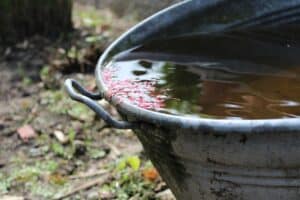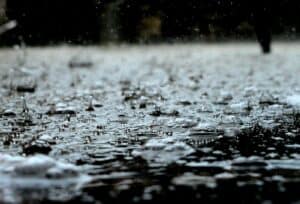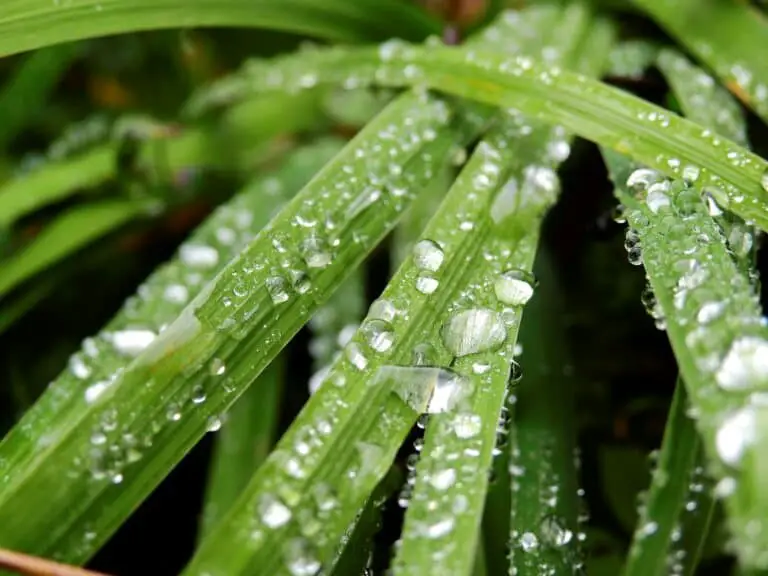Imagine tapping into the simplicity and efficacy of a rainwater harvesting system, a solution that not only reduces your water bill but also contributes to sustainable living. Whether you’re new to the concept or looking to enhance your existing setup, understanding the basic blueprint of these systems is crucial. They consist of four main components: a catchment area, a channeling system, a collection container, and essential accessories that ensure the functionality and cleanliness of the collected water.
A well-designed rainwater harvesting system offers a straightforward operation and requires minimal maintenance, yet it’s highly effective in providing a substantial volume of usable water. By following a clear and simple plan, you can set up a system that blends efficiency with sustainability, all while keeping an eye on both quality and aesthetics. Let’s dive into how you can achieve this balance and what you need to consider to make your rainwater harvesting system a success.
Overview of Rainwater Harvesting

Rainwater harvesting involves collecting and storing rainwater from surfaces like roofs and using it for various purposes. This method serves as an eco-friendly solution to manage water supply, especially in areas with limited freshwater resources.
The process starts with rainwater being collected from a catchment area, usually a rooftop. Systems designed for rainwater collection maximize water quality and minimize contamination. For instance, a first flush diverter redirects the initial rainwater, which may contain large debris or other chemicals, away from the storage tank. Subsequent, cleaner water is then funneled into a rainwater storage tank through components like downspout filters which remove smaller particles.
After storage, the harvested rainwater can be utilized for non-potable uses such as irrigation purposes, flushing toilets, and washing clothes. In urban settings, integrating a rainwater harvesting system helps reduce dependency on municipal water, thereby lowering your water bill. Regular maintenance ensures the system operates efficiently, optimizing the substantial volume of water harvested during months of high rainfall.
Historical Context of Rainwater Harvesting
Rainwater harvesting, a practice that dates back to ancient times, has evolved significantly yet retains its core purpose of maximizing water efficiency. In ancient civilizations such as Roman, Greek, and Byzantine empires, rainwater harvesting was an essential method for ensuring a stable water supply in both urban and rural settings. Remarkably, the Greek island of Crete used large cisterns to store rainwater, showcasing early engineering prowess aimed at surviving the dry seasons.
Moving through history, techniques and technologies advanced, but the necessity of collecting rainwater remained vital in regions with scarce water resources. In places like India and other developing countries, rainwater harvesting systems have been and still are crucial for agricultural, personal, and drinking water purposes, particularly in areas where water quality and availability are significant concerns.
Today, rainwater harvesting is recognized not just for its practical benefits in managing stormwater runoff and reducing water bills, but also for its role in sustainable water management. This practice benefits eco-friendly urban development, alleviates pressure on municipal water systems, and promotes resilience against varying seasonal rain patterns. The technology now includes sophisticated systems equipped with first flush diverters and downspout filters to ensure the quality of harvested water, making it suitable for non-potable uses like irrigation, toilet flushing, and even watering livestock. Such systems embody a modern yet historical continuity of this ancient practice, blending tradition with innovative solutions to meet contemporary water demands.
How Rainwater Harvesting Works

Capture
Rainwater harvesting begins with the capture of rainwater from your roof. This is done using a catchment area which typically includes the roof surface. The design of the catchment system ensures that it effectively collects rainwater without accumulating large debris and other chemicals that might contaminate the water. Systems like first flush diverters and downspout filters play crucial roles here. A first flush diverter ensures that the initial flush of rainwater, which may contain contaminants from the roof, isn’t collected. Following this, the downspout filter captures any remaining particulate matter, ensuring only clean rainwater enters your storage system.
Store
Once captured, rainwater is channeled to a storage system, such as a rainwater storage tank. These tanks can vary widely in size and material, depending on your roof size, monthly rainfall, and how much rainwater you intend to store. The storage tank often requires regular maintenance to ensure no sediments build up and that the stored water remains clean. Options range from above-ground rain barrels, which are suitable for small-scale use in urban settings, to large cisterns for more significant water needs in rural areas. It’s important to have a well-sealed and durable tank to avoid contamination and water loss.
Reuse
The final step in a rainwater harvesting system is the reuse of harvested rainwater. Non-potable applications, such as watering livestock, landscape irrigation, or flushing toilets, are common uses. However, with additional treatment, like a disinfection system, rainwater can also be made safe for potable purposes, reducing your dependence on municipal water and possibly lowering your water bill. Systems can be designed to directly connect the storage tank to your plumbing system through underground piping, equipped with a control system and flow meter to manage and monitor the usage of stored rainwater efficiently.
Benefits of Rainwater Harvesting
Rainwater harvesting offers a plethora of advantages, particularly in the realm of environmental and economic sustainability. By collecting and storing rainwater, you can reduce dependency on municipal water supplies, which is especially critical during periods of water scarcity or stringent water restrictions.
Reduced Water Bills and Enhanced Water Supply Security
Installing a rainwater harvesting system can lead to substantial savings on your water bill. By utilizing stored rainwater for non-potable uses such as watering gardens, flushing toilets, and washing clothes, the demand for potable water is significantly reduced. This reduction not only lowers your monthly expenditure on water but also ensures that there is enough water available to meet demand during dry seasons or in drought situations. Moreover, in areas where water supply can be unreliable, having a rainwater collection system serves as a backup source, enhancing your water supply security.
Positive Environmental Impacts and Support for Diverse Uses
Rainwater harvesting aids in mitigating stormwater runoff, which can reduce erosion, decrease the risk of flooding, and lessen the impact on local waterways. The use of rainwater collection systems in urban settings contributes positively to managing stormwater more effectively. Additionally, harvested rainwater, which typically collects from roof areas, is generally free from other chemicals and pollutants found in ground or surface water, making it suitable for landscape irrigation, industrial processes, and even swimming pools, with proper treatment and disinfection systems in place.
By embracing rainwater harvesting, you actively contribute to a more sustainable and eco-friendly water management approach. This not only alleviates the pressure on local water infrastructure but also promotes a healthier environment by reducing the demand for chemically treated tap water. Whether it’s for a small home garden or large industrial use, rainwater harvesting can be scaled to suit your needs, making it a versatile solution to water management challenges.
Common Uses of Harvested Rainwater

Outdoor Uses
Harvesting rainwater offers numerous benefits, particularly for outdoor applications in both urban and rural settings. One of the primary uses is for landscape irrigation, ensuring that gardens and lawns receive adequate water without straining municipal supplies. By using a rainwater collection system, you can store water for dry seasons, making it especially beneficial in low lying areas where water scarcity is common. Large cisterns can be incorporated into systems to meet the high water demand of extensive landscaping in large cities.
Additionally, harvested rainwater is ideal for washing vehicles and watering livestock, two activities that often require substantial amounts of water. Agricultural applications, such as irrigation purposes, greatly benefit from the use of non-potable water, reducing the reliance on chemically treated water and promoting eco-friendly water management. When planning your rainwater harvesting setup, considering the catchment area and roof size is essential to maximize collection efficiency.
Indoor Uses
Inside the home, rainwater can be utilized for several non-potable applications, significantly reducing your water bill. Systems often include a first flush diverter to eliminate contaminants and other chemicals from the initial flow of rainwater, ensuring that the stored rainwater remains clean for use. Typical indoor uses include flushing toilets and washing clothes—applications that consume a large portion of household water use and do not necessarily require potable water.
Moreover, advanced rainwater harvesting systems equipped with proper filtration and disinfection systems can safely supply water for showering and handwashing. This application is increasingly pertinent in urban areas where water quality and supply can be inconsistent, providing a reliable alternative to municipal water. Regular maintenance of filters such as downspout filters is essential to prevent large debris from entering and compromising the water quality.
By integrating these systems, you’re not only saving on utility costs but also contributing to a sustainable approach that lessens the burden on public water systems and mitigates stormwater runoff—a crucial step toward eco-friendly urban development.
Types of Rainwater Harvesting Systems
Basic Roof Systems
Basic roof systems represent the foundation of effective rainwater harvesting, especially suitable for urban settings and suburban homes. This system typically involves collecting rainwater from your roof surface, directing it through gutters, and passing it through a first flush diverter to remove large debris and other chemicals before it enters a storage tank. These systems are ideal for irrigation purposes, watering livestock, or even flushing toilets. They require regular maintenance to ensure water quality and prevent blockages in the downspout filter.
A critical component of these systems is the rainwater catchment area, generally measured in square feet, which directly influences the storage capacity. Many homes use rain barrels for smaller-scale collection or large cisterns to store rainwater for more extensive usage periods, like dry seasons or during water restrictions. Remember, the effectiveness of your rooftop rainwater harvesting greatly depends on regular cleaning of gutters and the maintenance of the first flush system to keep the stored rainwater safe for use.
Surface Runoff Harvesting
Turning to surface runoff harvesting, this method becomes essential in larger properties or rural areas where expansive low-lying areas can collect significant amounts of rainfall. Unlike basic roof systems, surface runoff harvesting involves channeling rainwater from various collection surfaces, not just the roof, into a designed catchment system that might include grates and underground piping.
This type of system is particularly valuable for managing stormwater runoff in large cities or areas prone to flooding. The collected rainwater can be used for non-potable purposes or further treated for potable use, helping to significantly reduce your water bill and reliance on municipal water systems. For adequate functionality, the installation involves a more complex control system to manage the flow rate and the volume, ensuring that the harvested water meets demand without overwhelming the system.
Both types of rainwater harvesting systems contribute to eco-friendly water management by reducing the load on municipal systems and providing an alternative water supply that is not only sustainable but also cost-effective. With proper installation and regular maintenance, these systems can offer a reliable source of water while promoting rainwater harvesting as a vital part of modern sustainable practices.
Design Considerations for Rainwater Harvesting Systems
Assessing Your Needs and Environment
When planning your rainwater harvesting system, understanding your specific needs and local environment is crucial. First, determine the primary use of the harvested rainwater—whether for irrigation purposes, toilet flushing, or watering livestock. Each application has different requirements for water quality and volume. For instance, landscape irrigation might not require as much filtration as water intended for washing clothes.
Your local climate plays a significant role in how you design your system. Areas with frequent and heavy rainfall might need larger storage capacity to maximize rainwater collection during wet seasons. Conversely, if you reside in an urban setting with dry seasons, you’ll need to plan how to store rainwater during rainy periods to meet demand throughout the year. Check local weather data to understand the monthly rainfall patterns and use this information to estimate collection volumes.
Environmental factors, such as the presence of large trees or buildings that might block rain or shed contaminants onto your catchment area, should also be considered. Installing screens or first flush diverters can help remove large debris and other chemicals, ensuring better water quality.
Sizing and Placement of Water Storage
Choosing the right size and location for your rainwater storage tank is another crucial decision in setting up an effective harvesting system. The storage capacity should align with your catchment area, expected rainfall, and water usage. As a general guideline, you can use the following formula to estimate potential harvest: Catchment Area in Square Feet x Volume of Rainfall in Inches x 0.623 = Rainwater Harvest in Gallons.
Placement of your storage tank should optimize the gravity flow of water and minimize the need for additional energy-consuming pumps. Locations on elevated areas or utilizing underground piping systems can be beneficial, particularly in large cities where space might be a premium. For larger systems, especially in rural areas, such systems might include large cisterns placed in low-lying areas to capture maximum runoff.
Additionally, consider accessibility for regular maintenance, potential expansion, and compliance with local zoning or building codes. Strategic placement and sizing of your rainwater storage system not only optimize functionality but also contribute to the system’s efficiency and longevity, ensuring a reliable water supply and lower water bills.
Setting Up a Rainwater Harvesting System
Necessary Components and Accessories
To establish an efficient rainwater harvesting system, you need various components that ensure the quality and usability of the collected water. The first essential piece is the first flush diverter, vital for diverting the initial water flow which contains the most particles and pollutants from the roof. This component helps maintain cleaner water in your storage tanks. Additionally, installing a downspout filter will further remove large debris and prevent clogging in your system.
For storing rainwater, incorporating a rainwater storage tank is crucial. Choosing the right size depends on your roof area and the monthly rainfall your region receives. A simple formula—multiplying your catchment area by the rainfall amount—can help you determine the storage capacity needed to meet demand effectively. Don’t forget about accessories like overflow pipes and mosquito guards, which are imperative for maintaining a clean and safe water supply.
Installation Tips
When installing a rainwater harvesting system, selecting the right location is key. Ideally, place your rainwater storage tank in a shaded area to inhibit algae growth and reduce evaporation. For those in urban settings, space might be limited, so consider underground tanks or slimline tanks designed to fit alongside buildings or in low-lying areas.
Ensuring proper gradient and support for the rainwater catchment area is crucial for efficient water flow into the storage tank. If you’re using the water for landscape irrigation, installing an adequate pump and filtration system will provide the necessary water pressure and cleanliness. Regular maintenance, such as cleaning out filters and checking for leaks, will prolong the system’s lifespan and ensure it operates at peak efficiency, ultimately helping reduce your water bill.
By incorporating these tips and components, you’re equipped to set up a rainwater harvesting system that is not only sustainable but highly effective for various applications, from toilet flushing to watering livestock or garden irrigation.
Legal and Safety Considerations
Compliance with Local Regulations
When setting up a rainwater harvesting system, it’s crucial to adhere to the rules and regulations specific to your locality. These regulations can vary significantly depending on whether you’re in an urban or rural area. Most local laws focus on aspects such as the allowable uses of harvested rainwater, whether it be for irrigation purposes, toilet flushing, or other non-potable uses. It’s essential to check with your local government or municipal water authority to ensure your system complies with health and safety codes, zoning laws, and building regulations. Some areas, especially in large cities, may have restrictions or require permits for large cistern installations or modifications to existing roofing structures.
Ensuring Water Quality and Safety
Rainwater harvesting provides an eco-friendly water management solution, but ensuring that the stored water is safe for its intended use is paramount. Employing a first flush diverger and a robust filtration system can significantly reduce contaminants such as large debris and other chemicals from the catchment area before the water reaches your storage tank. It’s also advisable to incorporate a disinfection system to deal with any biological contaminants that may be present. Regular maintenance of your system, including cleaning out filters and checking for leaks or blockages in the downspout, helps maintain water quality over time. Additionally, if your harvested rainwater is intended for drinking, stringent purification and testing protocols must be followed to meet health standards for potable water.
Wrapping Up
Adopting a rainwater harvesting system is not just a step towards sustainability; it’s a smart, practical measure that can significantly reduce your water bills and lessen your environmental impact. By understanding the components and design considerations, you’re well-equipped to implement a system that suits your specific needs. Remember, regular maintenance is key to ensuring your system remains effective and safe over time. Embrace this eco-friendly practice and you’ll contribute to a more sustainable future while enjoying the benefits right in your own backyard.
Other suggested articles:

